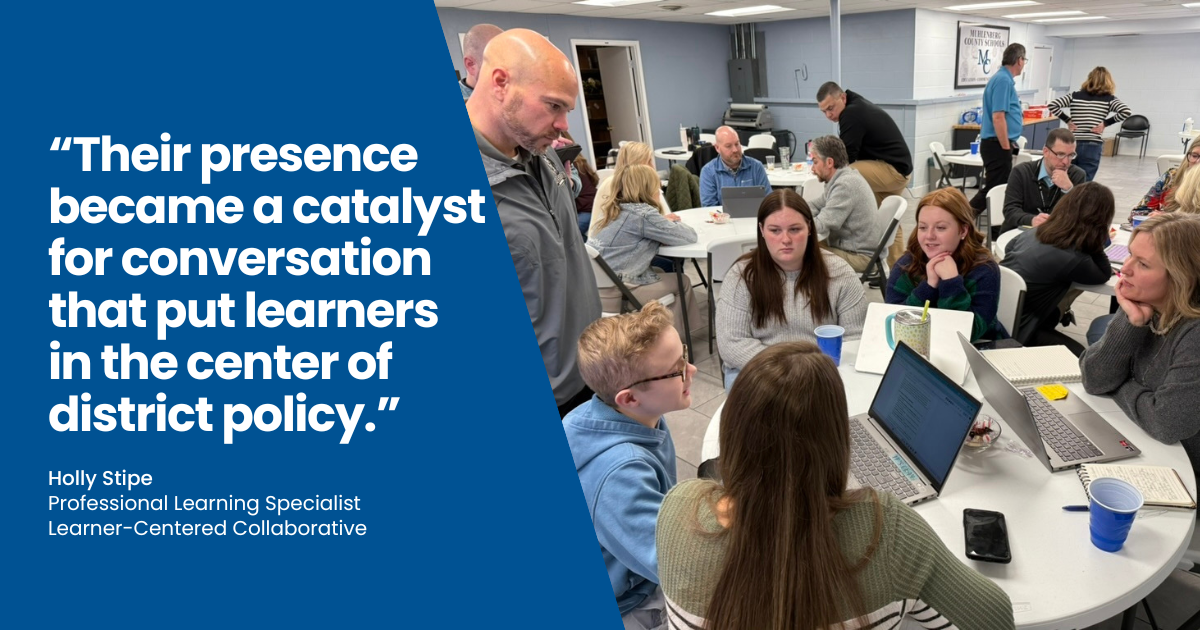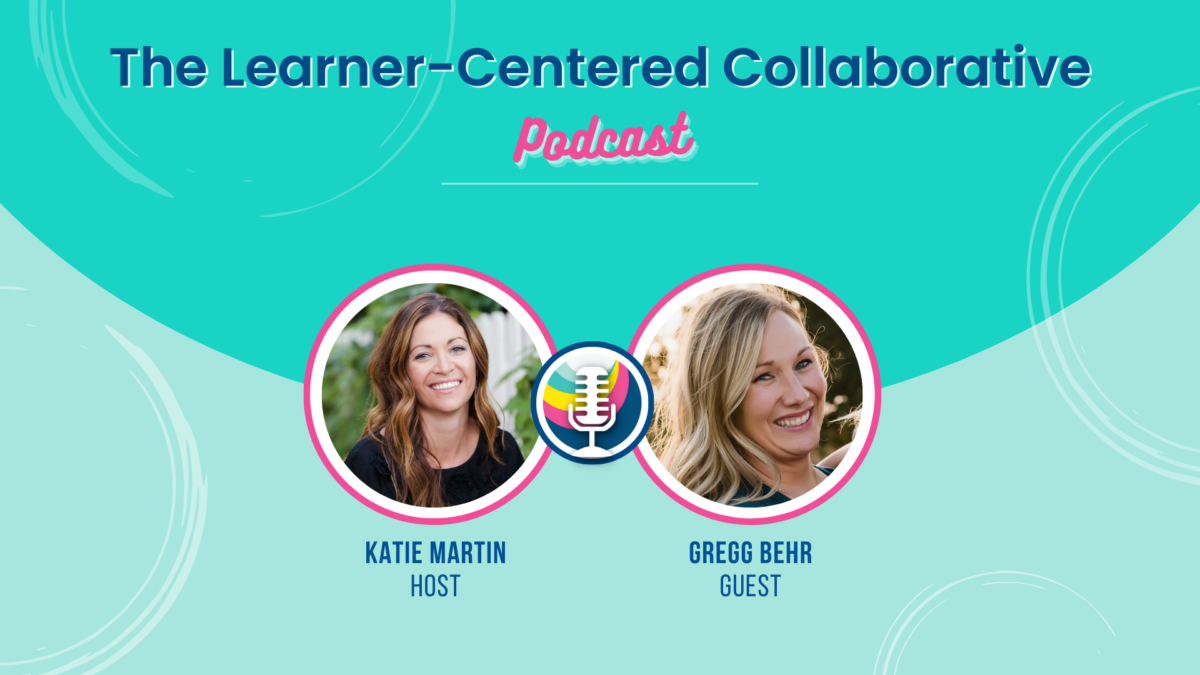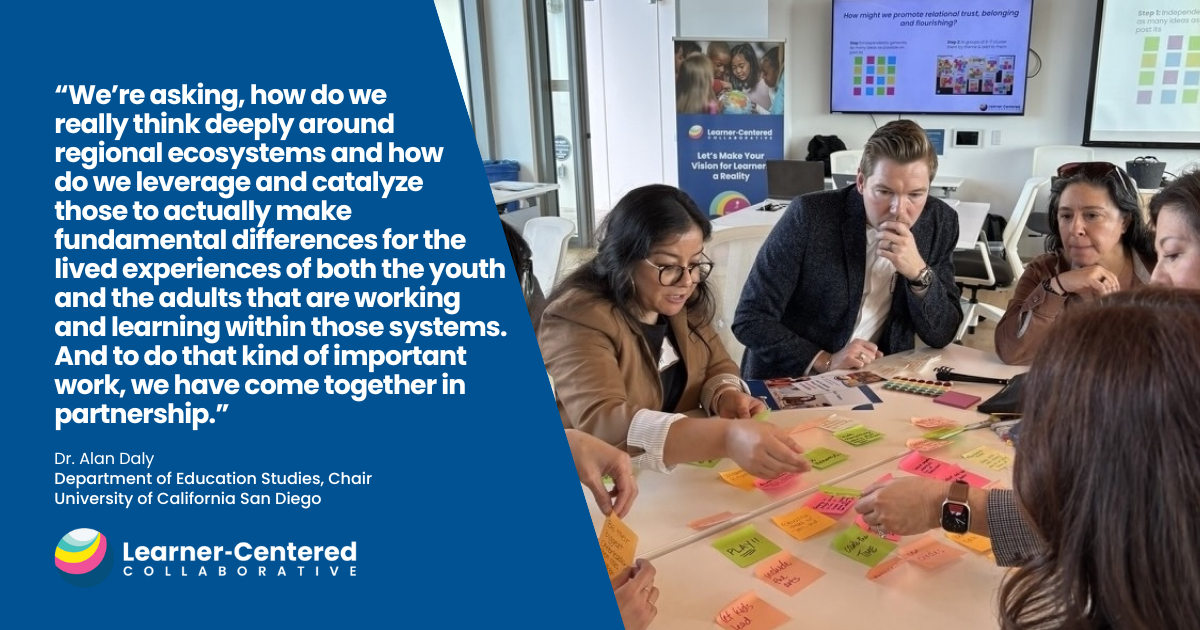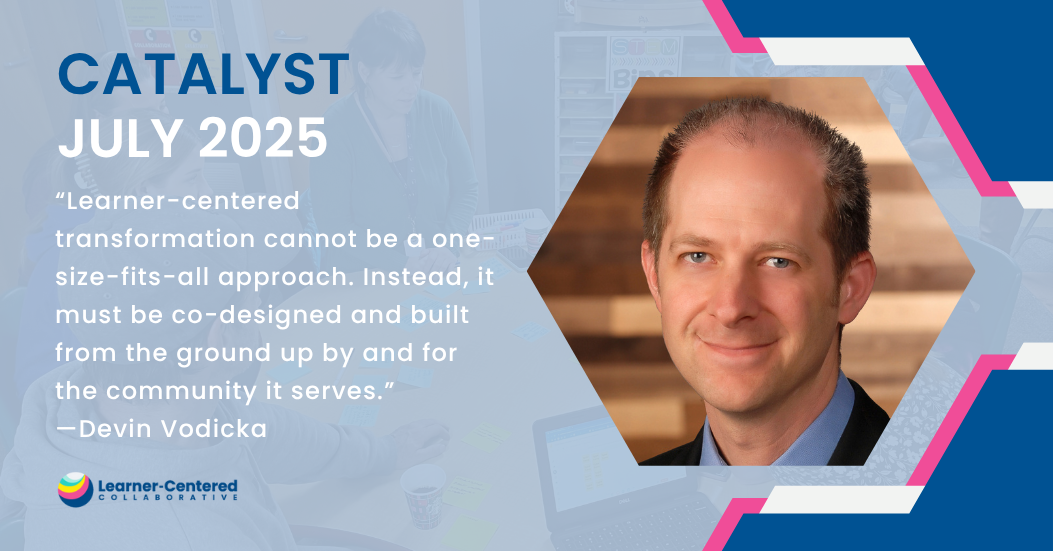Stepping Toward Learner-Centered Education
As an ardent believer in the learner-centered movement, I find joy in looking back at my own journey to make learning authentic, personalized, competency-based, inclusive and equitable. Just like Rome, my learner-centered expertise wasn’t built in a day, and that’s precisely the purpose of this post. I’m sharing the start of my own journey in support of others ready to dip a toe into learner-centered practices.
Setting the Stage
It’s 2008 (think first generation iPhone days) and I’m a brand new French teacher getting certified during my first year in the classroom. Winter break is less than 2 weeks away, and we’re wrapping up a unit in French 1 about daily objects and body parts. The test is on Friday, but I can’t seem to pinpoint the elements I need to reteach. Each student has gaps, but they’re all over the place. How am I going to address this?!
I have a vivid memory of sitting alone at my desk late Tuesday night, posing that very question to myself, when it hit me: I was trying to address 60+ students’ unique needs. What if, instead, I gave each student exactly what they needed to address his or her own gaps?
Taking a Step Toward Learner-Centered
The French 1 textbook included two versions of each unit test. I planned to use version A for the summative the on Friday, so I printed version B to use as a pre-test. Before making student copies, I coded each pre-test question with a label representing the skill or content it related to:
- Les Parties du Corps (body parts)
- Les Objets Quotidiens (daily objects)
- Les Articles (articles)
- Les Verbes (verbs)
- Le Passage Audio (listening section)
I then created a student self-assessment sheet to include with the pre-test:
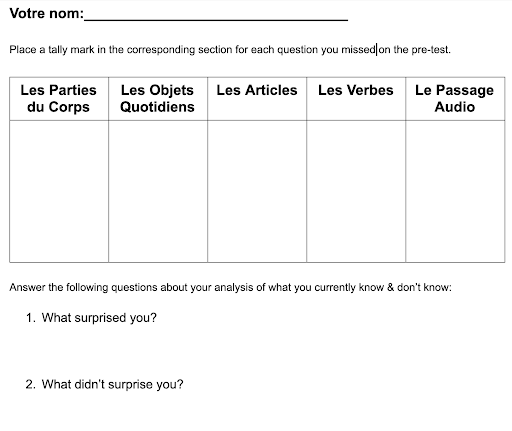
On Wednesday, students completed the pre-test in class. In the last 15 minutes, I projected the answers to the pre-test and students self-assessed. They kept a tally of missed questions. Finally, they reflected on the experience, and I committed to help them fill their own personal gaps the next day in class.
As they arrived on Thursday, I handed learners their self-assessments. They noticed the classroom had been transformed: desks moved, no warm-up activity on the board, and stations were set up around the room. Each station corresponded to a skill or content category on their tracking sheet, and there were 4 enrichment stations.
Each learner knew that this was their time to practice the specific skills they needed in order to ace Friday’s summative assessment. On the back of their self-assessment, they found a personalized action-plan to log the centers they visited, as well as any at-home studying to fill their personal gaps. The script had been flipped—they were in charge of their learning and I would simply move around the room to coach and prompt as needed. My direct instruction lasted no more than 30 seconds, and then the magic happened.
Sample resources
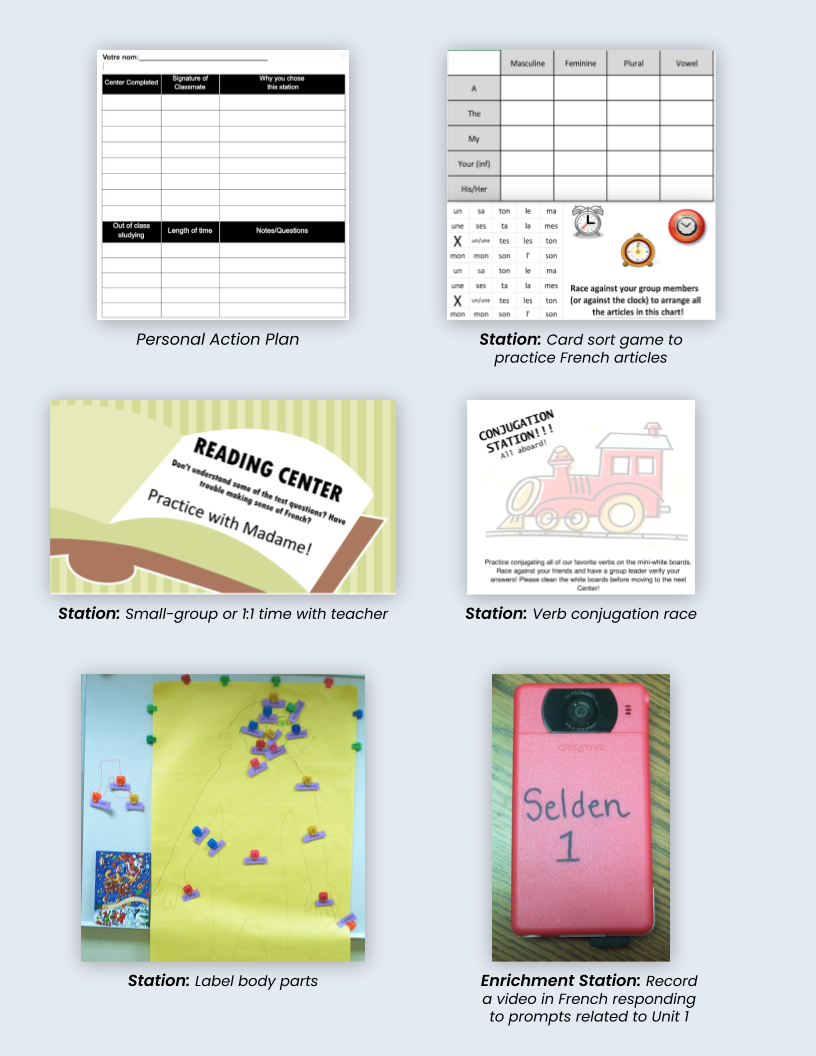
55 minutes flew by. Students were more engaged than ever before. As the bell rang and I reminded them about tomorrow’s test, their comments as they walked out the door ranged from “I’m going to ace this, Madame,” to “I see a 100 in my future,” and “Can we do this everyday?”
Small Changes, Significant Impact
The true test of this shift in practice was Friday’s summative assessment. The class had a record 100% pass rate – a feat never before achieved in the French program at the school.
So, what about this experience was (and wasn’t) learner-centered? Sometimes it can be hard to spot the nuggets, especially in the early days.
Personalized: “Learning is co-constructed based on each learner’s unique strengths, skills, interests, and needs.”
This was my entry-point. I struggled to know and respond to the diverse gaps in my students’ understanding, so I empowered them to respond to their own needs. In this first attempt, the focus was exclusively on gaps in learning, but in future units, I developed learner-agency, amplified student voice, and customized the learning experience for each student.
Competency-based: “Learning is driven by an evidence-based instruction, assessment, and feedback cycle based on progress toward desired knowledge, skills, and dispositions.
Competency-based education is a continuum, and upon reflection, this was a giant first step for me. At the time, I had never heard of CBE, but taking the small step of connecting tasks or test questions to tangible skills or knowledge opened my eyes to its potential. This sparked a commitment to transparency and equity in feedback that only CBE could meet.
Authentic: “Learning is meaningful, relevant, grounded in real-world challenges, and applications for authentic audiences.”
I’ll be vulnerable: this wasn’t the most authentic experience, but to change, we need to start somewhere, and this experience ignited a learner-centered spark in my practice. In a small way, I created engagement by encouraging learners to experience the centers that felt authentic to their needs. However, it would be a few more months in room 2109 before I discovered the true potential of authentic learning — a story for another post.
Dive into more strategies and examples and the power of authentic learning experiences.
Inclusive & Equitable: “Learning happens in collaborative and culturally relevant communities where every learner feels they belong and can tap into their full academic and social potential, contributing to the collective success of their community.”
In this French 1 end-of-semester assessment example, I merely scratched the surface on this aspect of a learner-centered approach. During these targeted centers, all learners were engaged with challenging learning activities. Students who needed to remediate had appropriate experiences, as did high-achieving students. There is so much more to tackle in this arena, but I dipped my toe in, and learner-centered education has been the cornerstone of my work ever since as an educator, coach, facilitator, and mom of an elementary-aged student.
Explore our learner-centered framework, designed to align with the world we live in and develop learners who will become engaged and productive citizens.
How might you experiment in a small way with learner-centered practices?
What learner-centered pillar will be your entry point:
- personalized?
- authentic?
- competency-based?
- inclusive & equitable ?
Discover the next step in your learner-centered journey with our free diagnostic tool.

